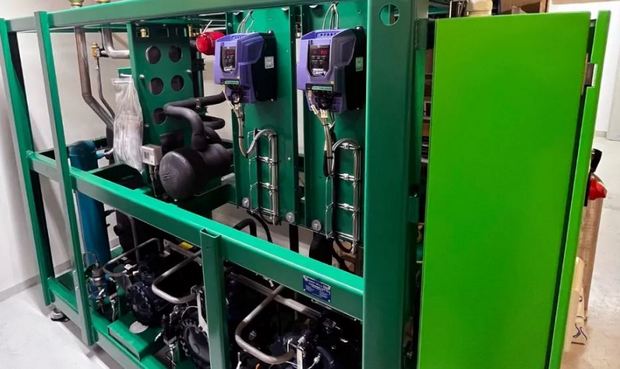Norway Hospital Upgrades to CO2 Refrigeration, Unlocking Energy Savings

St. Olav Hospital in Trondheim, Norway, retrofitted the numerous cold rooms for its laboratory, on-site hotel and canteen with a CO2 (R744) installation, complete with advanced controls and variable frequency drives (VFDs) to optimize energy efficiency and enhance system accuracy.
Sinop, a refrigeration manufacturing company in Czechia, designed and implemented the system. The installation included three refrigeration packs that were installed in June: a 20kW (5.7TR) medium-temperature (MT) pack plus two linked booster packs of 10kW (2.8TR) medium temperature and 5kW (1.4TR) low temperature. The project also features 12 evaporators.
Sinop incorporated Reftronix CO2 controllers for the refrigeration packs and cold rooms and Invertek’s Optidrive Eco VFDs for the compressors.
The combination of controllers and VFDs ensures the precise control of the complete refrigeration process as well as remote access to live data, alarms and settings, according to a statement by Invertek. The Optidrive VFDs accurately control the speed of the compressors, depending on the temperature required and other conditions. This data is picked up by the controller, which communicates with each of the drives. “Optimizing the speed of each of the compressor motors makes them more energy efficient than the conventional start/stop used in HFC refrigerant systems,” added Invertek.
Henrik Christensen, General Manager at Reftronix, said the combination of their controller and the VFD ensured the refrigeration system was as accurate and efficient as it possibly could be.
“CO2 HVAC&R systems are becoming more widespread in cooling and heating systems,” said Invertek. “This is due to the push globally to phase out synthetic HFC systems, which are some of the world’s worst polluters. Large-scale refrigeration users, such as retailers, are already converting to CO2 refrigerant systems to reduce energy consumption and meet tighter emission regulations.”
